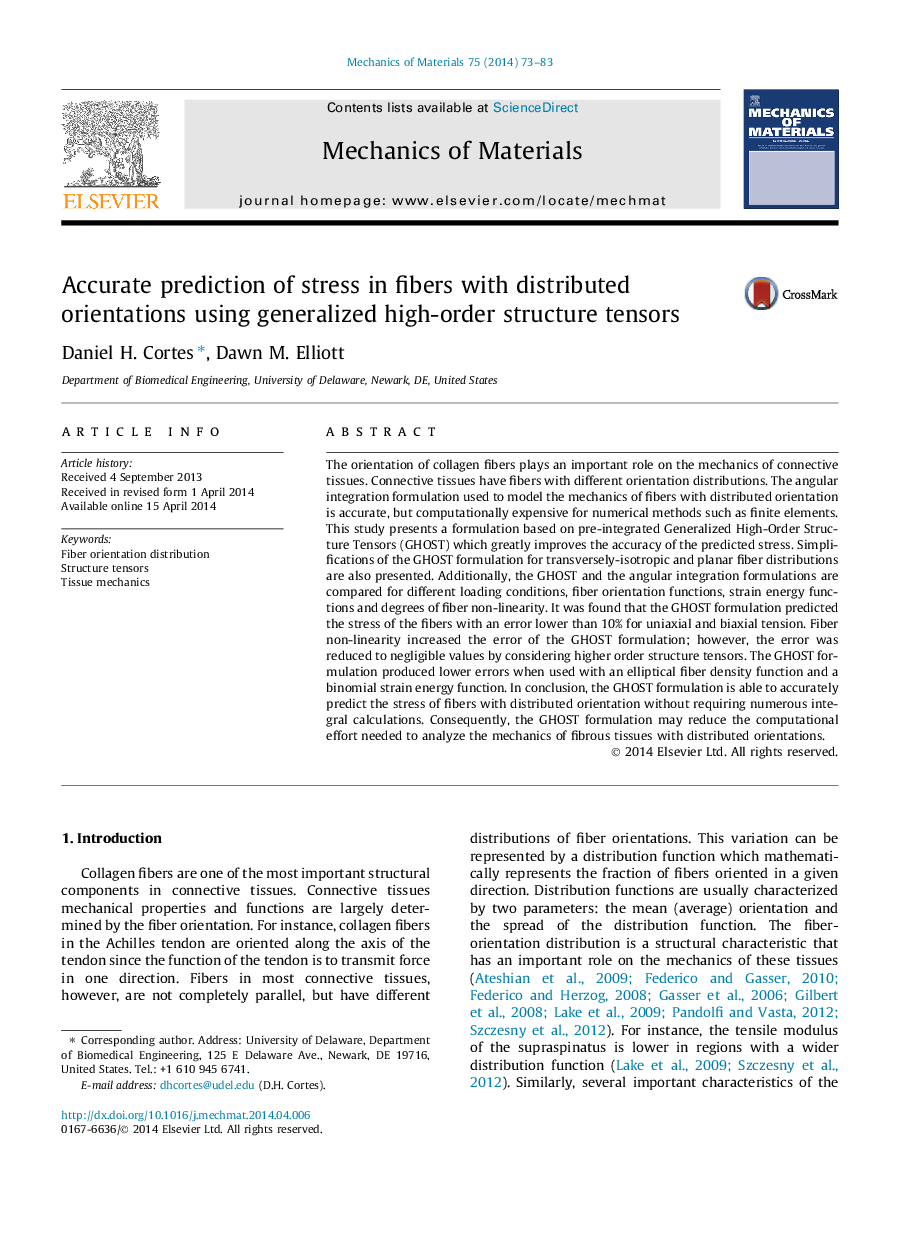| Article ID | Journal | Published Year | Pages | File Type |
|---|---|---|---|---|
| 802794 | Mechanics of Materials | 2014 | 11 Pages |
•A formulation to predict stresses of fibers with orientation distribution is shown.•The proposed method is compared to the gold standard method of angular integration.•Low values of error (compared to angular integration) were obtained.•The method was simplified for special symmetries of the fiber distribution.•The proposed formulation may improve the efficiency of numerical methods.
The orientation of collagen fibers plays an important role on the mechanics of connective tissues. Connective tissues have fibers with different orientation distributions. The angular integration formulation used to model the mechanics of fibers with distributed orientation is accurate, but computationally expensive for numerical methods such as finite elements. This study presents a formulation based on pre-integrated Generalized High-Order Structure Tensors (GHOST) which greatly improves the accuracy of the predicted stress. Simplifications of the GHOST formulation for transversely-isotropic and planar fiber distributions are also presented. Additionally, the GHOST and the angular integration formulations are compared for different loading conditions, fiber orientation functions, strain energy functions and degrees of fiber non-linearity. It was found that the GHOST formulation predicted the stress of the fibers with an error lower than 10% for uniaxial and biaxial tension. Fiber non-linearity increased the error of the GHOST formulation; however, the error was reduced to negligible values by considering higher order structure tensors. The GHOST formulation produced lower errors when used with an elliptical fiber density function and a binomial strain energy function. In conclusion, the GHOST formulation is able to accurately predict the stress of fibers with distributed orientation without requiring numerous integral calculations. Consequently, the GHOST formulation may reduce the computational effort needed to analyze the mechanics of fibrous tissues with distributed orientations.
